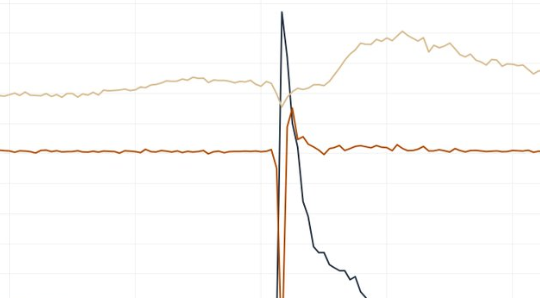- High Net Worth Individuals (HNWIs): High Net Worth Individuals are typically defined as those with a net worth of $1 million or more, excluding their primary residence. As of the latest data, there are approximately 22.4 million HNWIs in the U.S. This makes the U.S. the country with the largest number of HNWIs globally.
- Ultra High Net Worth Individuals (UHNWIs): Ultra High Net Worth Individuals are those with a net worth of $30 million or more. There are about 134,000 UHNWIs in the United States. This group represents a very small fraction of the population but holds a substantial portion of the nation’s wealth.
Newly released data from a Charles Schwab survey shows that Americans now believe it takes an average net worth of $2.5 million to be considered wealthy, marking a 12 percent increase from last year’s estimate of $2.2 million. This $300,000 spike reflects changing perceptions of wealth amid economic shifts.
Rob Williams, Charles Schwab’s managing director of financial planning, highlighted that “wealth” varies greatly depending on individual perspectives. For some, it represents financial freedom, for others, enriching experiences with family and friends, and for many, it’s tied to a specific financial milestone.
KAMALA DID THIS. / TRUMP CAN FIX IT.
Mass Inflation and Its Impact
Core inflation can be misleading because it doesn’t fully capture the real-life effects on people’s daily lives. For those with substantial wealth, inflation might seem like a distant concern. However, rising… pic.twitter.com/scVJwRrlsF— Chuck Howard (@ChuckHowar27921) August 23, 2024
The survey also revealed significant regional differences in what constitutes wealth. In California, respondents set the bar even higher, with San Franciscans estimating $4.4 million and Southern Californians $3.4 million as the necessary net worth to be considered wealthy.
Interestingly, the survey found that the amount required to feel “financially comfortable” has decreased. Americans now believe an average net worth of $778,000 is sufficient for financial comfort, down from last year’s peak of $1 million. This figure is more in line with 2022’s estimate of $775,000, and it shows an upward trend compared to $624,000 in 2021.
It’s time to make sure you have a Financial Plan 💯 Income, taxes, rising inflation, vacations, Grand kids and so much to plan for. Give you the peace of mind to do what you want, your way 👉 https://t.co/279nari7AH pic.twitter.com/Vwy0o33eF3
— Michael Loftus (@MichaelLWealth) August 23, 2024
The survey was conducted between March 4 and 18, sampling 1,200 individuals aged 21 to 75. The results reflect ongoing shifts in financial expectations and the evolving definition of what it means to be wealthy in the United States.
More information
- Wealth Distribution: The wealthiest 1% of U.S. households hold about 32% of the country’s total wealth. This concentration has been increasing over the past few decades. The top 10% of households in terms of wealth own about 70% of the total wealth in the United States.
- Median Net Worth: The median net worth for U.S. households is approximately $121,700. However, this figure varies significantly based on factors such as age, education, and homeownership status. Households in the top 10% have a median net worth exceeding $1.9 million, which is substantially higher than the national median.
- Income Thresholds: To be considered among the top 1% of earners in the U.S., a household generally needs an annual income of around $570,000 or more. The threshold for the top 10% of earners is approximately $200,000 per year.
- Geographic Variations: The definition of “wealthy” can vary greatly depending on the cost of living in different regions. For example, an income of $200,000 might be considered wealthy in some parts of the country but more middle-class in high-cost areas like New York City or San Francisco. States with the highest concentration of millionaires (measured as a percentage of households) include Maryland, New Jersey, and Connecticut.
- Wealth Growth: The wealth of the top 1% has grown significantly faster than that of the middle and lower-income brackets in recent years. This trend has been attributed to factors such as higher returns on investments, tax policies favoring capital gains, and economic shifts toward technology and finance sectors.
- Assets Composition: The wealthiest Americans tend to hold a significant portion of their wealth in financial assets like stocks, bonds, and mutual funds. In contrast, middle-income households have a larger share of their wealth tied up in home equity. According to the Federal Reserve, the top 1% own more than 50% of the equity in U.S. corporations and mutual funds.
- Charitable Giving: Wealthy Americans are also significant contributors to charitable causes. Individuals with a net worth of $1 million or more accounted for nearly half of all charitable donations in the U.S. in recent years.
Key Points:
- Americans now believe a net worth of $2.5 million is required to be considered wealthy, a 12% increase from last year.
- California respondents had higher wealth thresholds, with San Franciscans at $4.4 million and Southern Californians at $3.4 million.
- The amount considered necessary for financial comfort has decreased to $778,000 from last year’s $1 million.
- The survey reflects varying perceptions of wealth across different regions and demographics.
- Conducted in March, the survey included 1,200 participants aged 21 to 75.
Fallon Jacobson – Reprinted with permission of Whatfinger News

